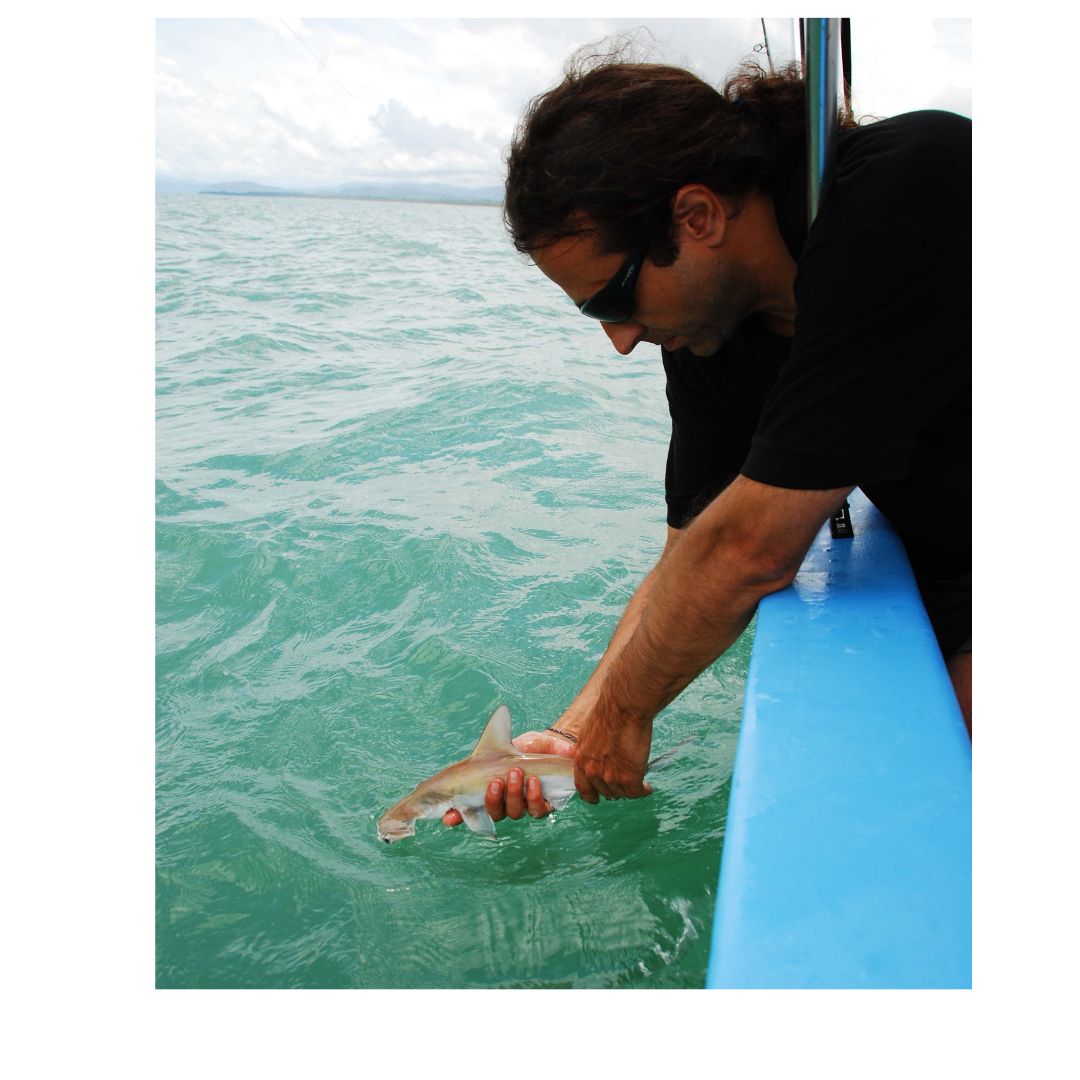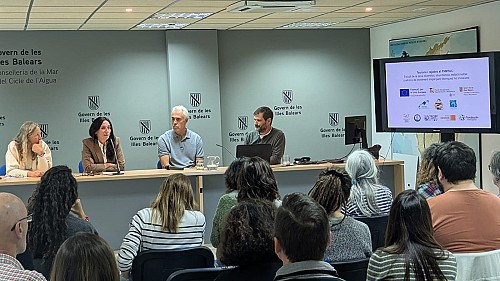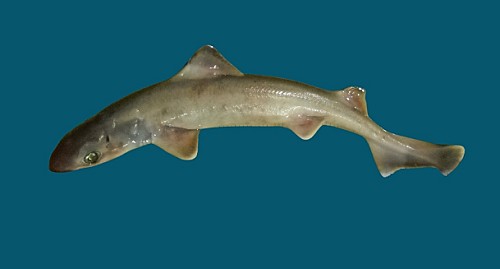Àlex Bartolí: 'The Mediterranean is the most dangerous sea for sharks'
Published 10.12.2024
Share

Àlex Bartolí is a marine biologist and expert in fisheries and shark and ray conservation. He is also a founding member of SUBMON, consultant and delegate for Spain to the European Elasmobranch Association and member of the SSC Shark Specialist Group. We caught up with him when he participated in the Balearic Marine Biodiversity Conference, giving a lecture on techniques to reduce the mortality of elasmobranchs.
Do you think that the conservation status of elasmobranchs in the Mediterranean is critical?
Yes. In fact, the Mediterranean is the most dangerous sea for sharks. It is one of the areas where shark species are most threatened, basically as a result of overfishing. In the Mediterranean, there are no fisheries directly targeting sharks, but there is by-catch of practically all fishing gears. Together with climate change, pollution, habitat destruction, a lack of food, and other factors, this has led to nearly 50% of the 80 species of sharks and rays in the Mediterranean being threatened.
Overfishing is their main threat?
Yes, it is. Overfishing is their main threat, and we must add the destruction of their habitats and other factors such as climate change. We talk about fishing in two senses. On the one hand, there are by-catches of sharks and rays, and on the other hand, many of the sharks' food resources are being depleted. In other words, there are fewer fish for them to eat. Actually, about 60% of the commercial species in the Mediterranean are at below safe biological levels.
Overfishing is shark's main threat, and we must add the destruction of their habitats and other factors such as climate change.
Do all fishing gears cause by-catch?
By-catch depends very much on the species and its main habitat. For example, pelagic species are more affected by surface longlining, while demersal species are more affected by trawling, trammel nets, bottom longlining.... It depends on where these species are moving, and it depends on the type of shark.
Which shark species are most threatened?
We could make a very long list, but in short, the shortfin mako shark (Isurus oxyrhinchus), the blue shark (Prionace glauca), the little gulper shark (Centrophorus uyato), the angel shark (Squatina squatina), the Largetooth Sawfish (Pristis pristis), and the smooth hammerhead (Sphyrna zygaena) are some of the species in the worst state of conservation.
Is there any species that only a few years ago swam in the Balearic Sea that have already disappeared?
Yes. The clearest one is the angel shark, or escat, as you say in the Balearic Islands. In fact, in the Balearic Islands there used to be a fishing gear called escatera that was used to catch this species, which has been considered extinct in the Western Mediterranean for the last 40 or 50 years.
Which actions do you think are key to their conservation?
In general, there are two key actions: minimising by-catch and protecting and conserving essential habitats for these species. In terms of reducing by-catch, there are different types of techniques to achieve it, but it is complicated. These techniques can often affect other species, such as birds or turtles. Regarding the second action, it would be necessary to determine which are the important areas of their life cycle: reproduction, breeding, feeding, etc. We still need a lot of knowledge to find out what they are.
Are you referring to the ISRAs (important shark and ray areas)?
ISRAs are an IUCN [International Union for Consevation of Nature] project and a first step to identifying these areas and creating an atlas. Based on this atlas, in those areas with maximum information, it should be possible to establish degrees of protection.
Is the complicity of fishers important?
Fishers' involvement is fundamental, extremely important. They are the ones catching the species. We need to raise awareness and encourage the quickest possible liberation with the least possible damage when these catches occur. However, their role goes much further. If they detect certain areas where many of these species are being caught, they can alert others to try to avoid these areas, thus reducing shark and ray by-catch. This is also in their own interests, as by-catch can spoil their nets.
'Fishers' involvement is fundamental, extremely important. They are the ones catching the species. We need to raise awareness and encourage the quickest possible liberation with the least possible damage when these catches occur.'
What does a fisher have to do to release a shark, if they happen to catch one accidentally?
It is important to try to understand the bodily structure of the animal in order to grab it where it’s least harmful. We have to keep in mind that they do not have a rib cage so when they are on deck or on the ground for long periods of time, their organs compress. There is internal stress for the animal. It should never be handled by the spiracles, eyes or gills, as these are extremely delicate areas. Nor should they be held by the tail, as their spinal column suffers. The fisher should make a kind of tray with their hands, although this also depends on the size of the animal.
As for the return to the water, it should be an introduction; the fisher shouldn’t ‘throw the animal into the water, rather gently release it. Of course, all this must take into account the fisher's safety. It is important to do a course and then adapt what you have learned to the fishing gear, the boat...
In this sense, it is important that we scientists take into account the fisher’s knowledge, as it is very valuable. We need to know the fishery where they work and collaborate with them to develop the best techniques on board. We need to find the best way torelease the animals, adapting them to their idiosyncrasies: the type of boat, the equipment they have, etc. The two skills have to be combined.
During your presentation, you said that sharks look strong but are actually ‘extremely delicate and sensitive’. Why?
Their biological characteristics make them very sensitive. They are slow-growing species, they have a very slow sexual maturation, and they have few young. Therefore, any impact makes their recovery much slower. They are large predators, which generally means there are fewer of them. They are K strategists [more on this later]. This is their first point of fragility, but there are more. Although some species can be very large, the fact that they do not have a rib cage or the stress they suffer when not in the water are elements to be considered, since evolution has not prepared them to withstand a stay out of the water.
What does this mean for K-strategists?
In ecology, we differentiate between K-strategists and R-strategists. R-strategists are species that mature sexually very quickly, have many offspring, and are usually animals. K-strategists are species that mature more slowly sexually, with very few offspring and with slower and more stable processes. These include sharks. They cannot withstand fishing pressure because they do not have the capacity to recover their populations. Remember that sharks have slow growth, late sexual maturation, very few offspring and, in some cases, reproductive cycles can be every two or three years, so their response to impacts is much slower than, say, bony fish.
You once said that what is really scary is a sea without sharks, because they help maintain its ecological balance. What would happen in a sea without sharks?
We don't know. It would depend on where this loss would occur. In general, sharks are large predators as well as intermediates. This helps maintain the balance of food webs, as they control populations and, in a sense, are ecosystem engineers. The worst impact would be in a place where when you remove sharks, no other species can take over their role. You take out a vital piece that causes the lower floors to become cluttered. However, marine ecosystems are very complex and one would have to analyse the impact that would occur in each case.
Have you always had a relationship with the sea? Why did you decide to dedicate yourself to marine conservation?
My relationship with the sea is thanks to my parents. When I was a child they took me to the sea, to the beach, by boat....They were nature lovers and taught me to look at nature with respect and fascination. When it came to choosing my studies, I was torn between veterinary medicine and biology. I took biology and specialised in marine biology. As for sharks, I have always been fascinated by them. It started with the movie Jaws. Many people were scared of the sea, but I was fascinated by it. When I started my studies, it was already clear to me that I wanted to work with large animals in general and sharks in particular.
QUICK TEST FOR SEA LOVERS
A book: The end of the line, by Charles Clover, and News from an Unknown Universe, by Frank Schätzing.
An image that evokes the Mediterranean Sea: Pont d’en Gil, in Menorca
A marine species: The basking shark (Cetorhinus maximus)
A person or organisation of reference: Shark Trust and its conservation director, Ali Hood.
A beach: Sa Riera, Begur (Catalonia).
Optimist, pessimist, or realist? Realist.




